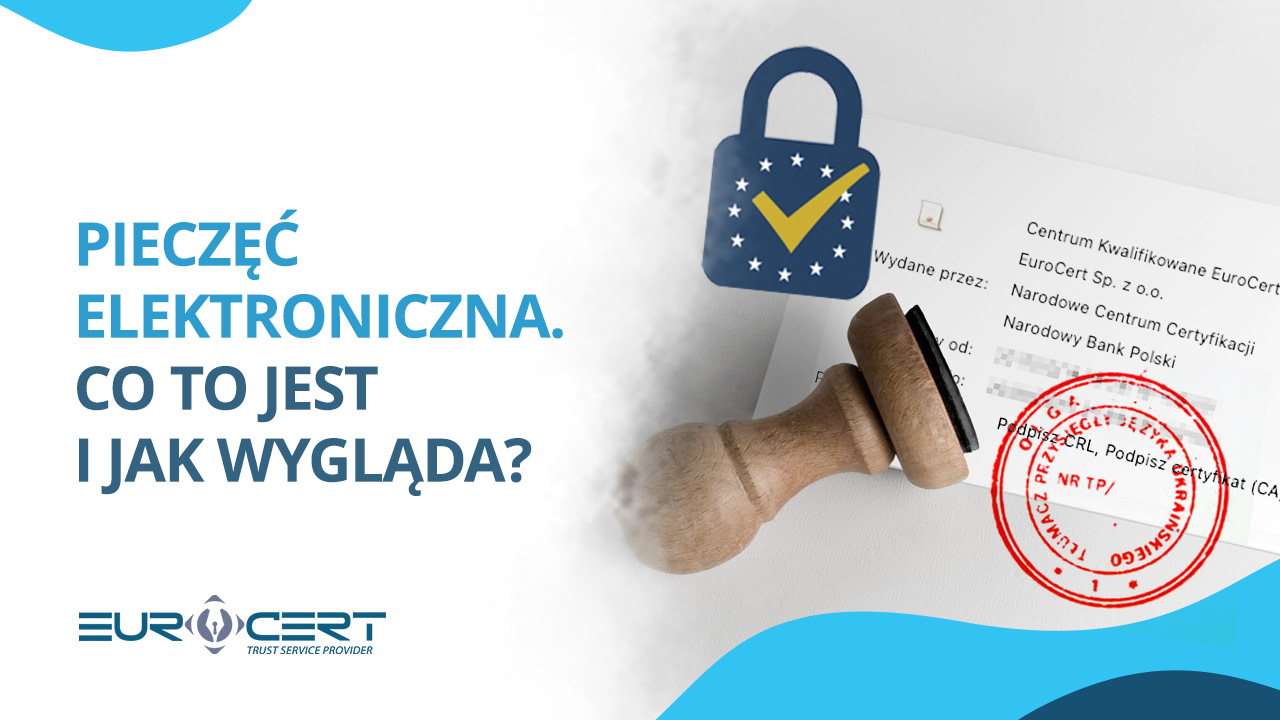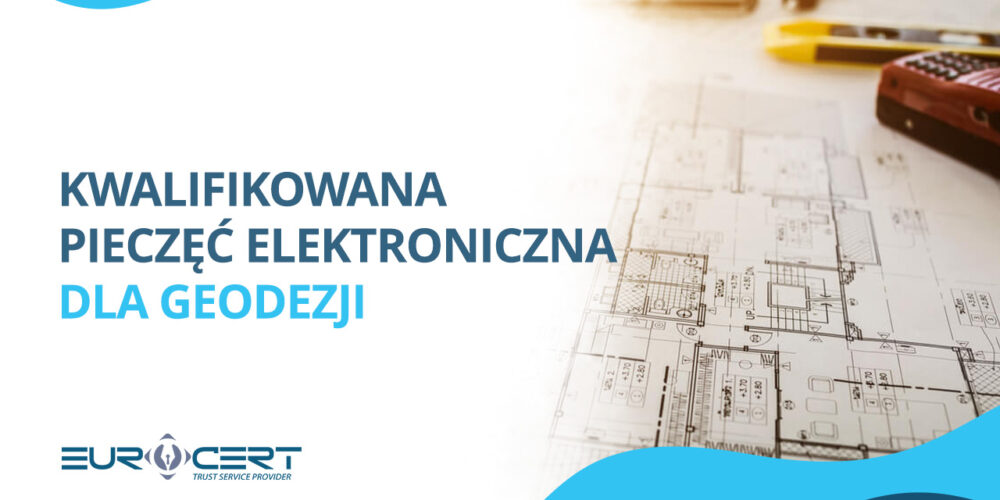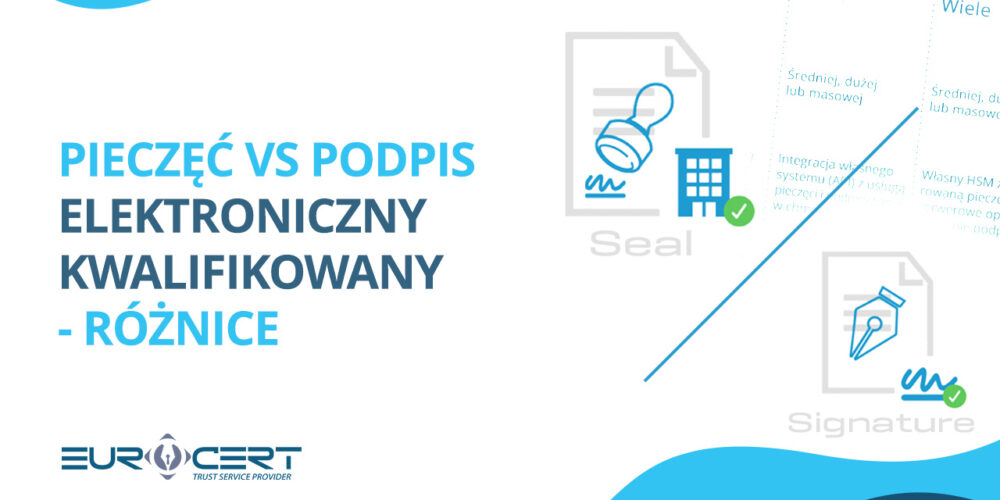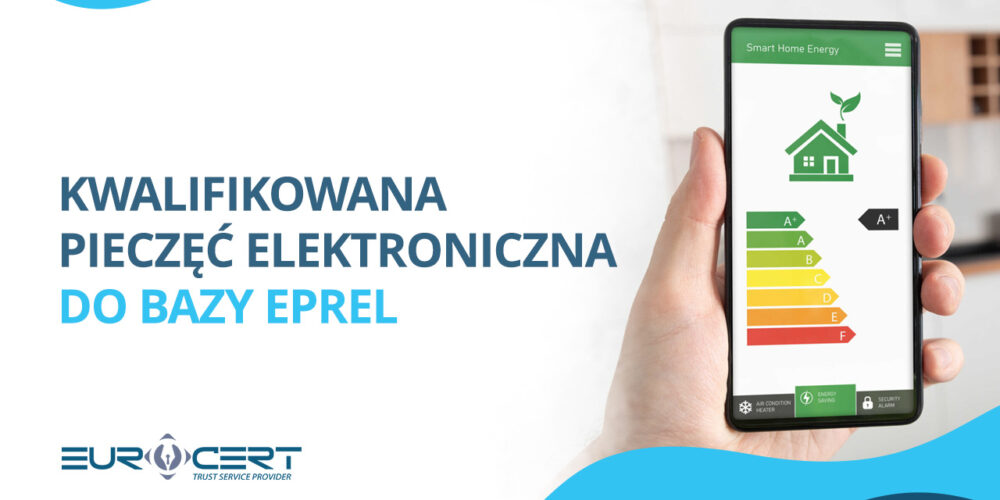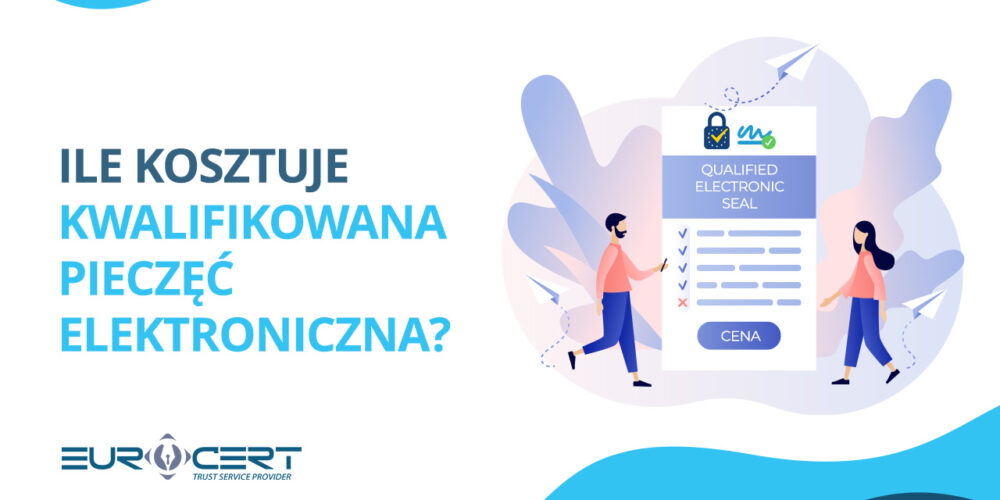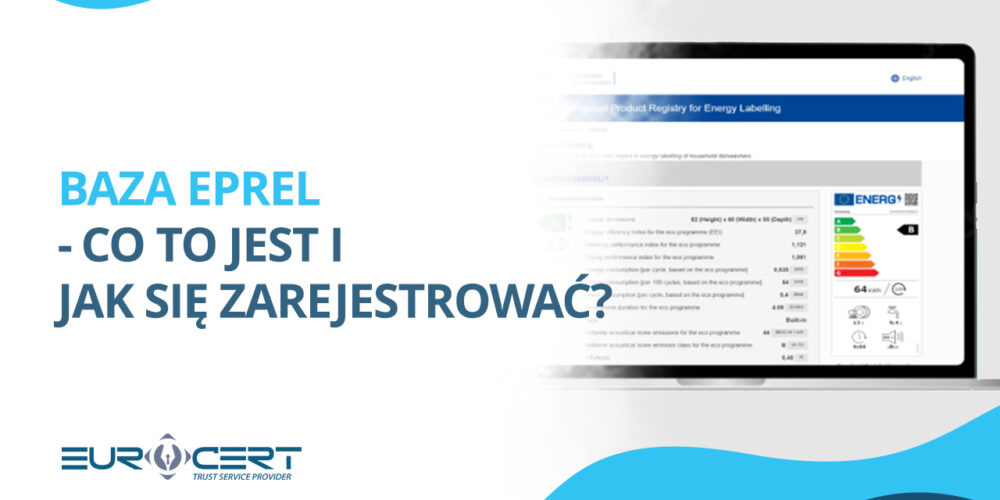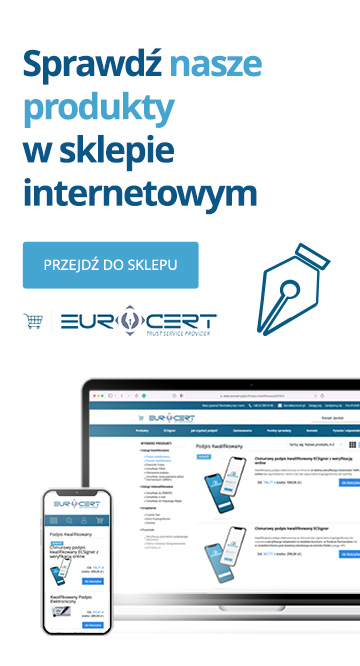Prawdopodobnie wielu właścicieli firmy pamięta czasy, kiedy głównym sposobem zabezpieczania dokumentów była klasyczna pieczątka firmowa. Dziś, w dobie wszechobecnej cyfryzacji, tradycyjne rozwiązania z powodzeniem zastępuje pieczęć elektroniczna, która stała się odpowiednikiem zwykłej pieczątki w świecie online. Czym jest e-pieczęć i jak wygląda? W jaki sposób narzędzie to może przyspieszać transakcje biznesowe? Odpowiedzi na te pytania znajdziesz w tym artykule.
Pieczęć elektroniczna – co to jest?
Pieczęć elektroniczna, inaczej e-pieczęć, jest cyfrowym narzędziem, które służy do pojedynczego lub masowego pieczętowania dokumentów elektronicznych danymi organizacji. Jest to odpowiednik tradycyjnej pieczęci firmowej, którego używa się do zapewnienia autentyczności i integralności plików cyfrowych. Pieczęć elektroniczna potwierdza również tożsamość podmiotu, który wydał cyfrowy dokument.
Mówiąc o e-pieczęci, mamy na myśli pieczęć elektroniczną kwalifikowaną, której stosowanie jest uregulowane w unijnym rozporządzeniem eIDAS i polskim prawie. W praktyce oznacza to, że dokumenty opieczętowane pieczęcią elektroniczną traktowane są jak oryginały i uznawane w Polsce oraz wszystkich państwach członkowskich Unii Europejskiej.
Pieczęć elektroniczna nie jest alternatywą dla podpisu elektronicznego, którym posługują się osoby fizyczne. Z pieczęci korzystają podmioty, które posiadają osobowość prawną. Mogą to być spółki kapitałowe (np. spółki akcyjne, spółki z ograniczoną odpowiedzialnością), jednostki samorządu terytorialnego, uczelnie wyższe, fundacje czy spółdzielnie.
Sprawdź ofertę pieczęci kwalifikowanych
Pieczęć elektroniczna – co zawiera i jak wygląda?
Pieczęć elektroniczna zawiera certyfikat kwalifikowany, który obejmuje dane elektroniczne, identyfikujące firmę lub inną organizację. W najprostszej postaci, e-pieczęć ma formę karty SIM lub karty bankomatowej, które obsługiwane są przez czytniki kart podłączane do komputera. Istnieje także rozwiązanie w postaci rozwiązania chmurowego bez dodatkowych urządzeń.
E-pieczęć z certyfikatem kwalifikowanym zawiera w sobie dane, które może odczytać odbiorca dokumentu. Mogą być to:
- nazwa firmy lub organizacji,
- adres siedziby (kraj, województwo, miejscowość, kod pocztowy, nazwa ulicy i jej numer),
- rodzaj identyfikacji podatkowej VAT lub NTR – np. NIP, KRS,
- numer identyfikacji podatkowej,
- nazwa jednostki organizacyjnej.
W odróżnieniu do podpisu kwalifikowanego, pieczęć elektroniczna nie zawiera danych osobowych, tj. imię i nazwisko czy nazwa stanowiska. W praktyce oznacza to, że nie może służyć do składania oświadczenia woli. Jej zastosowanie poświadcza przede wszystkim pochodzenia dokumentu elektronicznego oraz zapewnia jego integralność.
Pieczęć elektroniczna – rodzaje
Certyfikat pieczęci elektronicznej może być umieszczony na różnych urządzeniach, co sprawia, że na rynku dostępnych jej kilka jej rodzajów. Należą do nich, m.in.:
- pieczęć elektroniczna na karcie kryptograficznej,
- pieczęć elektroniczna w chmurze.
Ten artykuł może Cię zainteresować:
Pieczęć elektroniczna na karcie kryptograficznej
Klasyczna pieczęć elektroniczna w najprostszej postaci wydawana jest na karcie kryptograficznej (np. karcie SIM lub karcie bankomatowej). Aby opieczętować dokument elektroniczny tym rodzajem e-pieczęci, niezbędny będzie czytnik karty w formie USB lub czytnik karty w formie bankomatowej oraz desktopowa aplikacja do podpisywania (działająca również offline).
Takie rozwiązanie jest idealne do podpisywania pojedynczych dokumentów w firmach, których siedziba znajduje się w jednej lokalizacji, a jej pracownicy mogą mieć fizyczny dostęp do narzędzia. Z pieczęci elektronicznej na karcie, korzystają często urzędy i inne organizacje, których procesy biznesowe nie wymagają automatyzacji. Ten rodzaj wybierają firmy, które dbają o wysoki poziom bezpieczeństwa w lokalnych środowiskach informatycznych.
Pieczęć elektroniczna w chmurze
Pieczęć elektroniczna może być dostępna również w środowisku chmurowym (cloud). W tym wariancie użytkownik rezygnuje z karty i czytnika, stosując wygodną aplikację mobilną, która obsługuje proces uwierzytelnienia. E-pieczęć dostępna jest przez internet i można jej użyć w kilka sekund poprzez odpowiednią aplikację desktopową. Przykładem takiej usługi cyfrowej jest ECSigner od EuroCert.
Chmurowa pieczęć elektroniczna z aplikacją sprawdza się przy podpisywaniu pojedynczych dokumentów w firmach, urzędach czy innych organizacjach, których biura są rozproszone w wielu lokalizacjach. Wykorzystywana jest tam, gdzie potrzebny jest zdalny dostęp do e-pieczęci dla wielu osób, w ramach jednej organizacji, której procesy biznesowe nie wymagają automatyzacji.
Firmy z sektora średnich i dużych przedsiębiorstw, których działalność wymaga masowego pieczętowania e-dokumentów mogą również korzystać z chmurowej pieczęci elektronicznej we własnych systemach (CRM, ERP, EZD) za pomocą interfejsu API. W tym wariancie pieczęć elektroniczna przechowywana jest na własnym serwerze lub urządzeniu HSM.
Rozwiązanie służy automatyzacji procesów, co służy podpisywaniu dużej liczby dokumentów w krótkim czasie. Przykładem usług tego typu może być pieczęć elektroniczna ECQSS Seal w planach Professional i Enterprise od dostawcy usług zaufania EuroCert.
Pieczęć elektroniczna – jak uzyskać?
Pieczęć elektroniczną można uzyskać w zdalnie online od kwalifikowane dostawcy usług zaufania lub stacjonarnie w Autoryzowanych Punktach powołanych do wydania takiej usługi. W dalszym procesie następuje potwierdzenie tożsamości i weryfikacja danych przedsiębiorstwa przez właściciela lub pełnomocnika.
Pieczęć elektroniczna – podsumowanie
Pieczęć elektroniczna to cyfrowy odpowiednik tradycyjnej pieczątki, który zapewnia autentyczność i integralność dokumentów elektronicznych. W przeciwieństwie do podpisu elektronicznego, z e-pieczęci mogą korzystać podmioty z osobowością prawną, np. spółki kapitałowe, jednostki samorządu terytorialnego czy uczelnie wyższe.
Na rynku dostępnych jest kilka rodzajów pieczęci elektronicznych, dostosowanych do różnych potrzeb biznesowych firm. Klasyczny wariant to e-pieczęć na karcie kryptograficznej działająca offline. Wygodną opcją jest chmurowa pieczęć elektroniczna z aplikacją mobilną, dostępna przez internet. W przypadku firm z sektora średnich i dużych przedsiębiorstw idealnie sprawdzi się chmurowa pieczęć elektroniczna na serwerze lub urządzeniu HSM, umożliwiająca automatyzację procesu pieczętowania w systemach klienta.
Korzystanie z pieczęci elektronicznej niesie ze sobą wiele korzyści. Usługa zwiększa bezpieczeństwo i wiarygodność dokumentów, usprawnia procesy biznesowe i eliminuje papierową dokumentację, oszczędzając czas i pieniądze. Chroni również przed fałszerstwami i manipulacjami, zapewniając firmom spokój ducha i pewność co do autentyczności przetwarzanych dokumentów.
